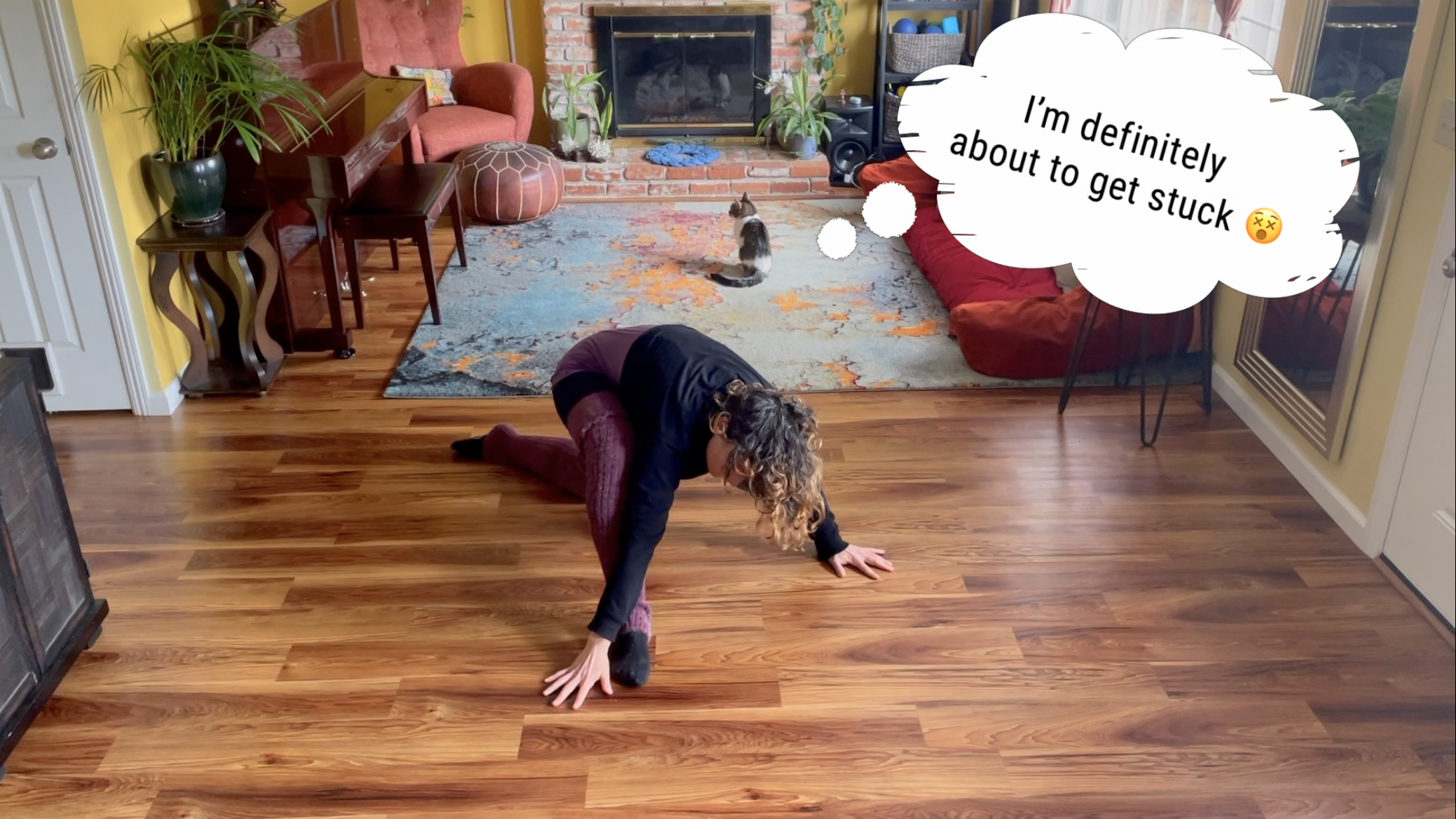Jill Hardy - 2B Final Project Overview
1. Describe your process. How did you choose your project? Why did you choose this method?
I chose to film a dance research session, which lasted about 30 minutes. I chose this because I often do freewheeling dance sessions that I glean useful insights from, but I wanted to try it out in a more intentional manner by giving myself some FFTT-inspired direction for parts of the session. Namely, to work with a flow trigger and to experiment with a concept, seeing how many different ways I could make it work.
The format was:
- Free moving, slow, sloshy warm-up
- Flow trigger: keeping the gaze on the hands
- Experiments with limb threading
- A final free integration dance to see how the elements I practiced showed up when I wasn’t trying to include them.
2. What felt good (or provided a healthy challenge) in creating this project? The intentionality of the format felt awesome, and having “tasks” kept me fully absorbed/entertained for longer than usual.
A few interesting movement challenges arose, too: one was keeping my gaze on my hands even as I rolled over (I don’t usually do that); and another was getting myself unstuck from one of the weirder thread variations.
3. What do you think your project offers the viewer/participant?
A potential structure for their own self-guided session.
A powerful tool for accessing a flow state: narrow focus. In this case it was specifically watching my hands as I danced, which is an option anyone can take up and use. But more generally, I’ve found that any time I focus my attention in this way, or direct students to do it, I stop thinking almost immediately and students tell me they “felt the flow”!
An example of exploring a movement concept. In this case, limb threading. Viewers can see how I take the idea and put it through many iterations to see what works.
Permission to experiment and goof around. Particularly in the threading section, there was a stretch of time I didn’t really know what to do and just kept wiggling, and I also had an “unsuccessful” unthreading from one of the positions.
4. If there’s one thing you’d do differently, what is it?
Maybe build a loop that includes both hand gazing and limb threading to end the session. If I were teaching it, that’s what I would do to help students integrate what they learned.
5. What did you learn that you will apply to your own experience teaching or training?
I remembered the power of focusing my gaze on something (hands in this case). I’d like to bring that in as a suggestion to my classes to help people sink into flow more easily.
I also discovered a new (to me) pathway out of a shoulder roll. It came up because I have a shoulder injury and was reluctant to roll down on the hurt side, so I didn’t, et voila!
– out popped a new teachable skill.
2C: Summary
Prepare to be entertained by silly, yet relevant illustrations and thought bubbles as you watch Jill move through a self-guided movement session. Observe as she rolls through a “lazy ground creature” warm-up, spends dedicated time with a flow trigger (hand gazing), conducts experiments with limb threading that don’t always go as planned, and then unwinds with a final “integration” dance where many elements from the session pop up all on their own.

